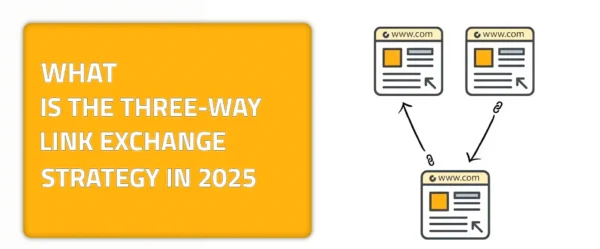Looking for a link exchange strategy that could help you boost your content? Well, it might seem impossible or hard at times to reach bigger networks that could help you with shareable content. That is why in this article we will discuss link exchange. Additionally, how it can be an effective shareable content strategy for your website’s traffic.
Linkexchange can help your website with its traffic, boost its exposure rates, and reach new audiences. It can also help you build valuable backlinks for your website’s strength. It all comes down to Google’s guidelines and how they affect your strategies for building links and exchanging them.
Read more to learn more about our top shareable content strategies in this article. We hope to help you decide which link exchange strategy to opt for.
What Is Link Exchange?
For the purpose of boosting exposure, web traffic, and search engine rankings, link exchange is a technique that involves two or more websites cooperating to place hyperlinks pointing to one another’s websites. As a way to enhance a website’s search engine optimization (SEO). Additionally, boost its online presence, this reciprocal linking tactic was frequently used in the early days of the internet. However, the importance and legitimacy of link exchange strategies have declined as a result of changes in search engine algorithms.
Previously, search engines like Google evaluated a site’s authority and relevance in based on the number of backlinks pointing to it. As a result, webmasters tried to obtain as many backlinks as they could. Frequently by participating in link exchanges or even link farms. Which are networks of websites with the purpose to generate reciprocal links. As a result, a large number of irrelevant, low-quality connections that offered users little value and manipulated search engine rankings were created.
Search engines responded by updating their algorithms to recognize and penalize these deceptive linking techniques. Placing a greater emphasis on the value and relevance of backlinks as opposed to their quantity. As a result, link trades are no longer as effective. They even harm a website’s SEO. That is, if search engines consider the links people trade to be spam or of low quality.
Finding the Right Partners for Link exchange: A Strategy of Its Own
Finding the correct partners to engage in link exchange with is essential to being successful. You should select websites that are pertinent to your niche. Also, have an audience that is comparable to yours if you want to be successful. To get started, conduct research on websites that are relevant to your sector. Contact with those websites that you believe might be a suitable fit for your company.
You can also locate possible partners and study their backlink profiles with the assistance of tools such as Ahrefs and Moz. It is important to keep in mind that link exchange should be approached as a partnership that will benefit both parties, and you should be willing to offer something of value to your partners in exchange for the connections they provide.
Creating Shareable Content That Drives Traffic
The powerful content technique known as link exchange can assist you in the process of building links and driving traffic to your website. The creation of content that is easily shareable and that your business partners will want to link to is essential to your success. This entails producing material that is useful, informative, and interesting for the individuals who constitute your target audience.
Infographics, how-to tutorials, and listicles are a few examples of the kind of material that is easily shareable. Don’t forget to optimize your content for search engines by including the appropriate keywords and meta descriptions in your writing. Link exchanges can be an extremely efficient method for expanding your internet presence. Moreover, driving traffic to your website, provided that you employ the appropriate content approach.
Measuring the Success of Your Link exchange Strategy
It is essential to evaluate the effectiveness of your link-exchange plan. In order to comprehend the effect it has on the traffic to your website and the positions it holds in. The ones present in the search engine rankings. Tracking the number of backlinks that come to your website from other sites might be an indicator of how successful your online endeavors are. You may also use tools like Google Analytics. That is to track referral traffic from partner sites and monitor changes in your search engine rankings.
Both of these things are possible with these tools. In addition, when evaluating the efficacy of your shareable content, you should pay attention to engagement metrics like the amount of time users spend on your site as well as the bounce rate. By analyzing these indicators on a regular basis, you will be able to make adjustments to your link-exchange plan and improve your content so that it has the most possible impact.
Guest Blogging: A Link exchange Strategy
This “ancient” link-building tactic is particularly well-liked (and for good reason). Every website needs new, audience-relevant, and SEO-optimized content. Locate websites that are relevant to your sector, then write an excellent post with a pertinent link to your website. Present the piece to a small group of chosen clients.
Once someone is okay with publishing it, let the other potential customers know you can create articles like this for them. (You might even let them choose the topic). Take into account the particulars of your prospect’s blogs. Provide one, because some of them could have one! It won’t just create a favorable impression; it also makes room for potential future partnerships. Also recommendations! As soon as the content is uploaded and the partnership is approved, make sure that potential partners publish do-follow links on their websites.
Types of Link Exchange:
There are various types of link exchange that you should be aware of before starting to implement the whole thing as a strategy for your website. It is important that you have a full understanding of each type to know how to operate this whole process correctly:
-
One-way Links:
This link exchange strategy is unidirectional, as the name would imply. Although you might not be linked back to those websites, your website may gain backlinks from other websites. Consider that you have created infographics and reports on a specific industry that are very useful to several companies in the same market. They might use your data as a source while writing material and connect to your website. But if they’ve produced a resource, you cannot link to it in return.
When two websites agree to exchange links, this is what we call reciprocal linking. It is like saying, “Let’s exchange benefits by linking content to each other’s websites or domains.” Now, here’s the thing: Google’s webmaster rules do allow reciprocal linking if it’s in a natural and random way. When two websites or content creators like each other’s work and vouch for each other’s knowledge, this is not seen as an attempt to manipulate search engine rankings. Reciprocal links from related sites add value for your visitors, improve your site’s authority, and help with SEO. In fact, reciprocal linking is so common that Ahrefs says that 74% of successful websites have reciprocal links. In other words, webmasters sometimes swap links to make their sites seem more reliable.
-
Three-Way Link Exchanges, AKA ABC Linking:
Three-way link exchanges are the best way to avoid straight link swaps and hide the tracks of link exchanges. A three-way link strategy is a way for two websites to trade links without directly doing so. Instead, they use a third, related website as a middleman.
We can see how ABC fits together in this way. Website A has a one-way link to website B, and website B has a link to website C (Site A, Site B, Site C). Even though this isn’t a two-way link, it still helps two websites get backlinks. For a three-way link exchange to work, a minimum of two of the parties should have high-quality websites that can create backlinks from authoritative sites. As you might have guessed, this way of using Google could lead you to all the wrong penalties you could face if you misused these strategies.
Avoiding Common Pitfalls and Staying within Google’s Guidelines
Even though link trading can be an effective content strategy, it’s critical to steer clear of frequent errors and remain compliant with Google’s standards in order to avoid being penalized. Participating in link schemes, which entail purchasing or selling connections solely for the goal of manipulating search engine rankings, is one of the most prevalent mistakes that people make on the internet.
This violates the standards that Google has established, which can lead to penalties or even the removal of a whole website from Google’s search results. In addition, you should make it a point to only trade links with websites that are both relevant and of high quality. Linking to sites of low quality or that are full of spam can hurt your results. Last but not least, you should always be transparent with your audience about any collaborations or exchanges you have in order to maintain their trust.
Final Thoughts on the Topic
Link Exchange is of crucial importance for your website’s traffic and exposure to other networks. However, you must know how to apply it correctly. Sometimes people or tech advisors would advise against it, as it might cause you a Google penalty if you implement it as a shareable content strategy in the wrong way.
By now, you might have a good idea of how to use Link Exchange and the different types it offers. If it is your goal to achieve a higher website traffic rate, we’ve got you! Our free domain, Linkexchange.AI, will allow you to exchange links with various other domains and networks to enhance your website’s SEO and Google ranking rates. Sign up now; it’s free and a good start for you to take your website to the next level!











